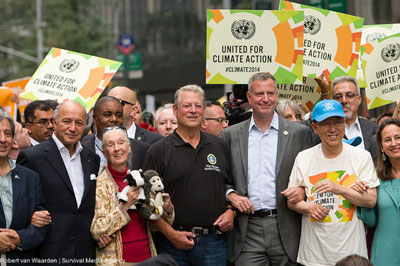Low income housing in NYC is about to get a $100 million energy efficiency lift, announced Mayor de Blasio and Julián Castro, Secretary of the US Department of Housing and Urban Development (HUD).
The program – the largest ever for public housing – will retrofit thousands of buildings through a series of competitive Energy Performance Contracts. Not only will it significantly reduce the city’s emissions, it will save tens of millions of dollars in energy and water costs and create over 500 union jobs.
It is part of NYC’s plan to cut emissions 35% by 2025 and 80% by 2050, from 2005 levels.
de Blasio also sees it as a way to reduce income inequality in the city, a core issue he was elected on. Energy costs are a much higher proportion of housing expenses for low income people, amounting to a regressive tax, he says. And they often live in less efficient buildings than wealthier residents. The city will also pay for upgrades in private buildings if owners agree to preserve lower income apartments.
de Blasio hooks arms with Al Gore and Jane Goodall during the historic Peoples’ Climate March in September:

The first RFP goes out this week, calling for energy services companies (ESCOs) to submit bids that affect 200,000 people – 89 properties with 87,000 apartments – about half of NYC’s public housing portfolio. The goal is to retrofit all 300 public housing developments in NYC.
HUD is providing NYC with technical assistance in developing the retrofit contracts – identifying potential energy conservation measures, quantifying their potential savings, and ranking them on potential cost effectiveness.
As part of the Mayor’s green buildings plan – One City: Built to Last – the City has committed to retrofitting every public building by 2025 and to extending the work to privately owned buildings through mandates if necessary.
In this case, ESCOs will quantify and guarantee expected energy savings, allowing the City to pay for installations through a loan. Energy savings will help repay the loan. Projects are expected to begin next year.
One City: Built to Last:
